 Search by Keyword
|
“MISERY”
(Paul McCartney – John Lennon)
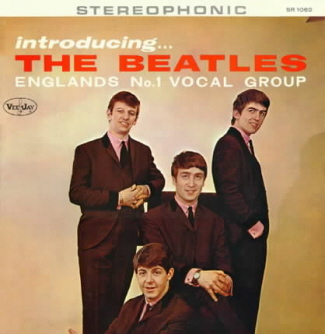 Although this song is not as memorable as most Lennon / McCartney collaborations (or “McCartney / Lennon” as was listed on their first British and US albums), it is characteristic of the team's songwriting and performance style in many ways. It's undeniable in its charm, especially for American fans who, for one unknown reason or another, were denied access to this song on any album since October 15th, 1964, when the “Introducing…The Beatles” album went out of print. While almost every other song released by The Beatles during their career was available in the US on million selling albums or singles throughout their career, the unavailability of this track made it sound even more charming when it was found by new American audiences in the early '80s. Being able to discover one of the cherished “lost Beatles songs” made the enjoyment even sweeter. As it was, American audiences would have to wait until March 24th, 1980 to hear this track in stereo for the first time, as we’ll see later. Although this song is not as memorable as most Lennon / McCartney collaborations (or “McCartney / Lennon” as was listed on their first British and US albums), it is characteristic of the team's songwriting and performance style in many ways. It's undeniable in its charm, especially for American fans who, for one unknown reason or another, were denied access to this song on any album since October 15th, 1964, when the “Introducing…The Beatles” album went out of print. While almost every other song released by The Beatles during their career was available in the US on million selling albums or singles throughout their career, the unavailability of this track made it sound even more charming when it was found by new American audiences in the early '80s. Being able to discover one of the cherished “lost Beatles songs” made the enjoyment even sweeter. As it was, American audiences would have to wait until March 24th, 1980 to hear this track in stereo for the first time, as we’ll see later.
Songwriting History
Beatles' manager Brian Epstein had been encouraging Lennon and McCartney as songwriters, not only for use within their band, but also supplying material for other recording artists. Brian saw the monetary and promotional possibilities of supplying known recording artists with new material to record and perform.
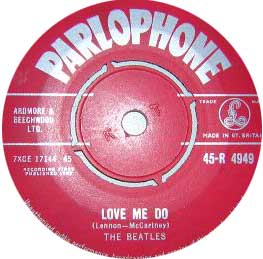 The Beatles, unfortunately, did not have an established credibility this early in their career. By January of 1963, the group had achieved a Top 20 British hit with “Love Me Do” and had just come out with their second single, “Please Please Me” on January 11th of that year, which was only just beginning to make its appearance on the British charts. However, haven been stirred up by Brian Epstein’s encouragement, John and Paul took to having a go, for the very first time, at writing a song especially intended for a particular recording artist. The Beatles, unfortunately, did not have an established credibility this early in their career. By January of 1963, the group had achieved a Top 20 British hit with “Love Me Do” and had just come out with their second single, “Please Please Me” on January 11th of that year, which was only just beginning to make its appearance on the British charts. However, haven been stirred up by Brian Epstein’s encouragement, John and Paul took to having a go, for the very first time, at writing a song especially intended for a particular recording artist.
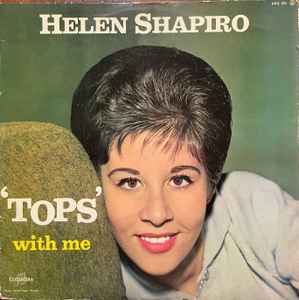 The group was just about to embark on an extensive nationwide tour on February 2nd, 1963. They were sixth on the bill under Helen Shapiro, whose British chart career The Beatles were very well aware of. At the age of 14, she began her string of British hits in April 1961 with a Top 10 hit, “Please Don’t Treat Me Like A Child”, followed by two #1 songs, “You Don’t Know” and “Walking Back To Happiness.” This was followed by a #2 smash, “Tell Me What He Said.” In early 1963, Helen’s deep and masculine voice was a hot commodity; surely hot enough to be top of the bill of a nationwide tour, being voted Best British Female Singer in 1961 and 1962. The group was just about to embark on an extensive nationwide tour on February 2nd, 1963. They were sixth on the bill under Helen Shapiro, whose British chart career The Beatles were very well aware of. At the age of 14, she began her string of British hits in April 1961 with a Top 10 hit, “Please Don’t Treat Me Like A Child”, followed by two #1 songs, “You Don’t Know” and “Walking Back To Happiness.” This was followed by a #2 smash, “Tell Me What He Said.” In early 1963, Helen’s deep and masculine voice was a hot commodity; surely hot enough to be top of the bill of a nationwide tour, being voted Best British Female Singer in 1961 and 1962.
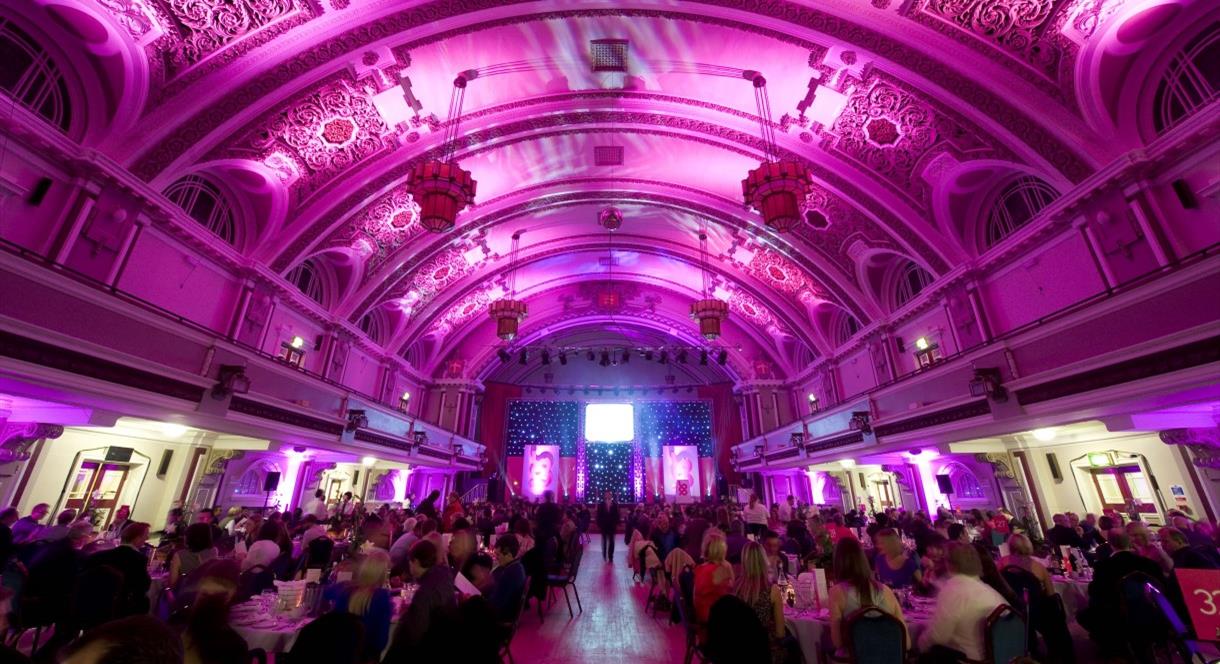 Shortly before the tour began, Norrie Paramour, Helen Shapiro's manager, informed Lennon and McCartney that he was looking for new material for her to record for an upcoming album the singer would soon record in Nashville, Tennessee. With this opportunity presented to them, John and Paul started work composing a song that would fill this need. They wrote it in a format that they felt would be compatible with her style and suitable to her vocal range. They reasoned that, even if it ended up as an album track or as a b-side on a future record of hers, it would still be a boost to their songwriting career. They started writing the song backstage before a performance they were giving at King's Hall, Stoke-on-Trent in Staffordshire on January 26th, 1963. Shortly before the tour began, Norrie Paramour, Helen Shapiro's manager, informed Lennon and McCartney that he was looking for new material for her to record for an upcoming album the singer would soon record in Nashville, Tennessee. With this opportunity presented to them, John and Paul started work composing a song that would fill this need. They wrote it in a format that they felt would be compatible with her style and suitable to her vocal range. They reasoned that, even if it ended up as an album track or as a b-side on a future record of hers, it would still be a boost to their songwriting career. They started writing the song backstage before a performance they were giving at King's Hall, Stoke-on-Trent in Staffordshire on January 26th, 1963.
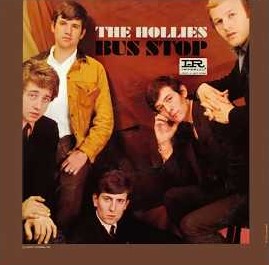 Allan Clarke, former lead vocalist for rival British band The Hollies who were also on the bill for this January 26th, 1963 performance at Stoke-on-Trent, said in a 2023 VintageRock Pod interview how he and fellow member Graham Nash played a small part in the writing of the song "Misery." "We were all in the same dressing room because there was only one. Of course, you are familiar with the phrase 'How are you?' 'Which songs are you performing.' That's frequently what happens when we try not to repeat ourselves. I recall being there when the two guys, Paul and John, took out their guitars and began strumming about, as if they were writing a song. 'Come over and help us write this song,' they said. So Graham (Nash) and I walked over there and inserted a word and a small alteration. Not too much, not too drastic, nothing of the sort. 'All right, thanks for that,' they said. I'm still waiting for the contract, which never arrived. That song was called 'Misery.'" Allan Clarke, former lead vocalist for rival British band The Hollies who were also on the bill for this January 26th, 1963 performance at Stoke-on-Trent, said in a 2023 VintageRock Pod interview how he and fellow member Graham Nash played a small part in the writing of the song "Misery." "We were all in the same dressing room because there was only one. Of course, you are familiar with the phrase 'How are you?' 'Which songs are you performing.' That's frequently what happens when we try not to repeat ourselves. I recall being there when the two guys, Paul and John, took out their guitars and began strumming about, as if they were writing a song. 'Come over and help us write this song,' they said. So Graham (Nash) and I walked over there and inserted a word and a small alteration. Not too much, not too drastic, nothing of the sort. 'All right, thanks for that,' they said. I'm still waiting for the contract, which never arrived. That song was called 'Misery.'"
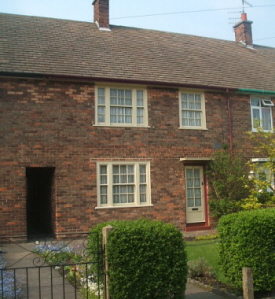 After the song was completed at Paul's home on Forthlin Road in Liverpool in the final few days of January of 1963, they were finally ready to present the song for consideration to be recorded by Helen Shapiro. Shortly after this Helen Shapiro tour began on February 2nd, 1963, McCartney, being ever the PR man of the group, got up the nerve to present the song to Helen Shapiro herself. As documented in Keith Badman's book "The Beatles Off The Record," Paul explained back in early 1963: "We were asked by Norrie Paramour to write a song for Helen Shapiro, for her to record in Nashville. We've called it 'Misery,' but it isn't as slow as it sounds. It moves along at quite a pace and we think Helen will make a pretty good job of it." The song was then presented to Norrie Paramour, who rejected it outright. Incidentally, the resulting album, this being the October 1963 released "Helen In Nashville," appeared after her career had waned considerably and did not chart in the UK. In retrospect, McCartney has stated, "She turned it down. It may not have been that successful for her because it's a rather downbeat song. It was quite pessimistic." After the song was completed at Paul's home on Forthlin Road in Liverpool in the final few days of January of 1963, they were finally ready to present the song for consideration to be recorded by Helen Shapiro. Shortly after this Helen Shapiro tour began on February 2nd, 1963, McCartney, being ever the PR man of the group, got up the nerve to present the song to Helen Shapiro herself. As documented in Keith Badman's book "The Beatles Off The Record," Paul explained back in early 1963: "We were asked by Norrie Paramour to write a song for Helen Shapiro, for her to record in Nashville. We've called it 'Misery,' but it isn't as slow as it sounds. It moves along at quite a pace and we think Helen will make a pretty good job of it." The song was then presented to Norrie Paramour, who rejected it outright. Incidentally, the resulting album, this being the October 1963 released "Helen In Nashville," appeared after her career had waned considerably and did not chart in the UK. In retrospect, McCartney has stated, "She turned it down. It may not have been that successful for her because it's a rather downbeat song. It was quite pessimistic."
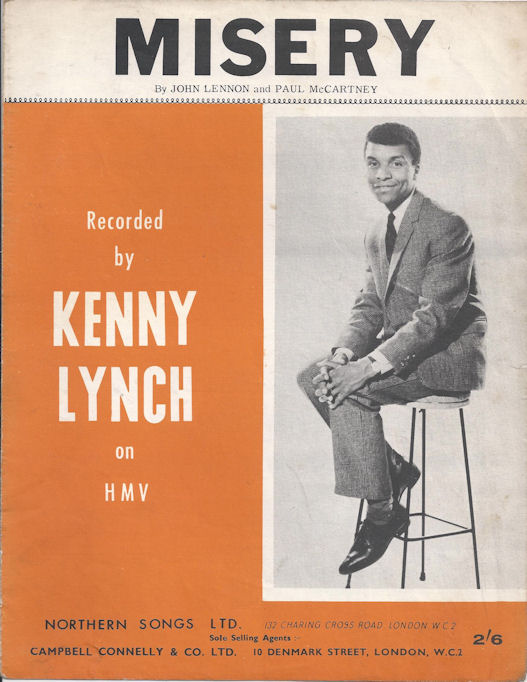 A fortunate turn of events did occur, though, concerning another performer on the bill during that tour. Kenny Lynch, a black singer, songwriter, entertainer and actor from London, also heard the song and decided to record it. Apparently, the composers first needed to alter lyrics to accommodate a male instead of a female vocalist, changing it to "I'm the type of guy," for instance. Even though it failed to make the UK charts, this was the first original Lennon / McCartney song ever to be recorded by another artist. Kenny Lynch's recording, which was released on March 15th, 1963, put a soulful spin on the pop song, which caused a little dissension from John, mostly because of his utilizing the skills of British session guitarist Bert Weedon. Lennon told Kenny Lynch about these feelings during a meeting in music publisher Dick James' office in 1963. "What'd you want to have Bert Weedon on the session for?" John exclaimed. "I would have played if you'd asked me." A fortunate turn of events did occur, though, concerning another performer on the bill during that tour. Kenny Lynch, a black singer, songwriter, entertainer and actor from London, also heard the song and decided to record it. Apparently, the composers first needed to alter lyrics to accommodate a male instead of a female vocalist, changing it to "I'm the type of guy," for instance. Even though it failed to make the UK charts, this was the first original Lennon / McCartney song ever to be recorded by another artist. Kenny Lynch's recording, which was released on March 15th, 1963, put a soulful spin on the pop song, which caused a little dissension from John, mostly because of his utilizing the skills of British session guitarist Bert Weedon. Lennon told Kenny Lynch about these feelings during a meeting in music publisher Dick James' office in 1963. "What'd you want to have Bert Weedon on the session for?" John exclaimed. "I would have played if you'd asked me."
 Kenny Lynch would also cross paths with a Beatle years later, appearing on the famous front cover of the hugely successful 1973 album "Band On The Run" by Paul McCartney and Wings. Kenny Lynch would also cross paths with a Beatle years later, appearing on the famous front cover of the hugely successful 1973 album "Band On The Run" by Paul McCartney and Wings.
As far as the songwriting itself goes, both Lennon and McCartney are in agreement that “Misery” was pretty much a 50/50 credit, possibly favoring Lennon slightly. "It was kind of a John song more than a Paul song, but it was written together," Lennon stated. In his 1997 book "Many Years From Now," McCartney countered: "It was our first stab at a ballad and had a little spoken preface. It was co-written. I don't think either one of us dominated on that one. It was just a job, you could have called us hacks, hacking out a song for someone." The original first line of the song, as sung by Kenny Lynch, was “You’ve been treating me bad,” whereas, during The Beatles’ recording of the song, the line was changed to “The world is treating me bad.” This was done with the intention of giving the song a more universal appeal.
Recording History
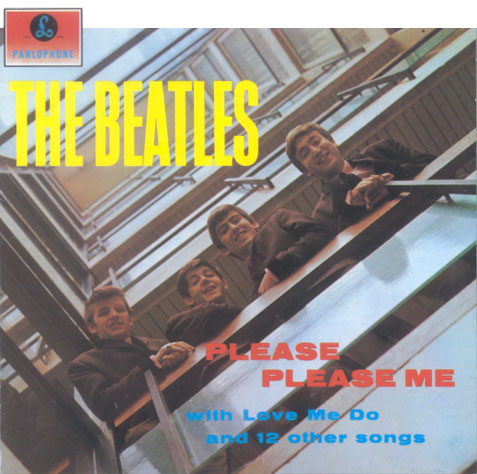 The recording of this song took place during the day-long recording session in which they recorded the bulk of their first British album “Please Please Me,” on February 11th, 1963. It was the fifth of ten songs they recorded on this day, being the last one recorded during the afternoon session of 2:30 to 6 pm. Noting that there were multiple takes recorded of four other songs during the afternoon session before “Misery,” it can be estimated that the eleven takes of this song were recorded during the last hour, or between 5 and 6 p.m. The Beatles all played their usual instruments during this recording. The recording of this song took place during the day-long recording session in which they recorded the bulk of their first British album “Please Please Me,” on February 11th, 1963. It was the fifth of ten songs they recorded on this day, being the last one recorded during the afternoon session of 2:30 to 6 pm. Noting that there were multiple takes recorded of four other songs during the afternoon session before “Misery,” it can be estimated that the eleven takes of this song were recorded during the last hour, or between 5 and 6 p.m. The Beatles all played their usual instruments during this recording.
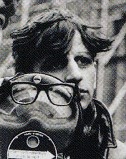 The first take of "Misery" was complete and performed with great vocal enthusiasm. Ringo even inserted a little drum fill after verse two, which he dropped later. Already in place was the ending with John and Paul’s alternating “ooohs” and “la-la-las,” although they sounded fresher and more vibrant this first time around. The only fault in "take one" was Harrison’s rhythmic guitar run in the bridges of the song, which weren’t in time. Probably for this reason alone, the group was asked by producer George Martin to try it again. The first take of "Misery" was complete and performed with great vocal enthusiasm. Ringo even inserted a little drum fill after verse two, which he dropped later. Already in place was the ending with John and Paul’s alternating “ooohs” and “la-la-las,” although they sounded fresher and more vibrant this first time around. The only fault in "take one" was Harrison’s rhythmic guitar run in the bridges of the song, which weren’t in time. Probably for this reason alone, the group was asked by producer George Martin to try it again.
 Just before “take two” begins, George practices his guitar run by himself and it sounds as if he’s perfected it. This take starts out a little rough, however, with the group’s timing being a bit off just after John and Paul’s vocal introduction. They quickly recovered from this and put in a spirited performance only to have George Martin stop the take just as the second verse was beginning. George Martin noticed that Harrison’s guitar sounded louder and somewhat more distorted, so he asked George if he changed guitars. “No…I probably changed the tone,” is what George Harrison explained, although he probably just turned up the volume. Being the gentleman that he was, George Martin asked him to “clean it up a bit, and a little less volume, George” and then they were ready to try it again. Just before “take two” begins, George practices his guitar run by himself and it sounds as if he’s perfected it. This take starts out a little rough, however, with the group’s timing being a bit off just after John and Paul’s vocal introduction. They quickly recovered from this and put in a spirited performance only to have George Martin stop the take just as the second verse was beginning. George Martin noticed that Harrison’s guitar sounded louder and somewhat more distorted, so he asked George if he changed guitars. “No…I probably changed the tone,” is what George Harrison explained, although he probably just turned up the volume. Being the gentleman that he was, George Martin asked him to “clean it up a bit, and a little less volume, George” and then they were ready to try it again.
 After a bit more practicing on their guitars, “take three” began, only to fall apart just after the first verse started because of John forgetting to switch guitar chords. “Take four” got a little bit farther, but just into the second verse Lennon sang “she won’t…” instead of “I won’t see her no more,” which also called this take to a halt. “Take five” ended at the same spot because, as John was concentrating on getting the words right, he forgot to change chords again. They took a little time to drill the words into John’s head before the next take began. After a bit more practicing on their guitars, “take three” began, only to fall apart just after the first verse started because of John forgetting to switch guitar chords. “Take four” got a little bit farther, but just into the second verse Lennon sang “she won’t…” instead of “I won’t see her no more,” which also called this take to a halt. “Take five” ended at the same spot because, as John was concentrating on getting the words right, he forgot to change chords again. They took a little time to drill the words into John’s head before the next take began.
 Except for another slight timing issue at the beginning, “take six” was off to a good start. They had added a few interesting touches to the arrangement by this time, the first noticeable one was Paul’s added grace notes on his bass guitar sprinkled here and there. The big surprises here were on the fourth measure of the bridges where, in addition to Harrison’s guitar run, Ringo adds a snare drum roll (not unlike what he’d perform a month later at the end of “Thank You Girl”). The eighth measure of the bridges also contains this snare drum roll along with a newly constructed guitar riff from Harrison that segues nicely back into the verse. The end of the song also features Ringo’s snare drum rolls whenever either John or Paul sings their “ooohs” or “la-la-las.” The timing wasn’t perfect, but we see them being very adventurous with the arrangement, possibly at the suggestion of George Martin. Except for another slight timing issue at the beginning, “take six” was off to a good start. They had added a few interesting touches to the arrangement by this time, the first noticeable one was Paul’s added grace notes on his bass guitar sprinkled here and there. The big surprises here were on the fourth measure of the bridges where, in addition to Harrison’s guitar run, Ringo adds a snare drum roll (not unlike what he’d perform a month later at the end of “Thank You Girl”). The eighth measure of the bridges also contains this snare drum roll along with a newly constructed guitar riff from Harrison that segues nicely back into the verse. The end of the song also features Ringo’s snare drum rolls whenever either John or Paul sings their “ooohs” or “la-la-las.” The timing wasn’t perfect, but we see them being very adventurous with the arrangement, possibly at the suggestion of George Martin.
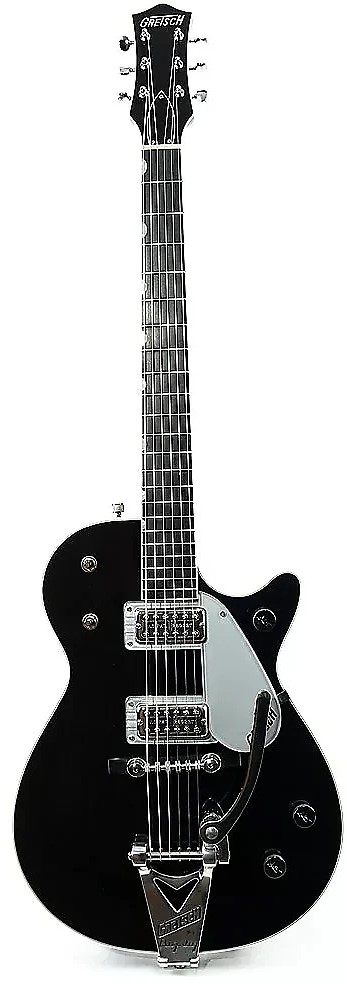 However, George Martin must have instructed them to simplify the arrangement again, instructing Ringo to just play a straight 4/4 drum beat throughout the song and for George to only play the first guitar run in the bridges, dropping the second run during the vocal "only one, lonely one." They implemented these changes for "take seven,” which was also a complete performance of the song. John changed his “oooh” at the end of the song to a loud hum but still insisted on the “la-la-la” as the song eventually would be fading away. However, George Martin must have instructed them to simplify the arrangement again, instructing Ringo to just play a straight 4/4 drum beat throughout the song and for George to only play the first guitar run in the bridges, dropping the second run during the vocal "only one, lonely one." They implemented these changes for "take seven,” which was also a complete performance of the song. John changed his “oooh” at the end of the song to a loud hum but still insisted on the “la-la-la” as the song eventually would be fading away.
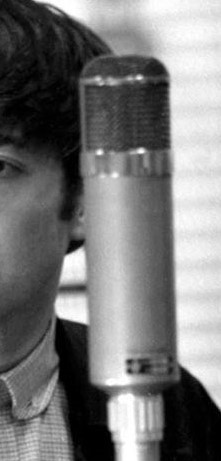 It was undoubtedly at about this point that George Martin decided that he himself would add a piano overdub at a later date to replace Harrison’s guitar run, which the guitarist was asked not to play because of his not being able to get the timing right. He apparently began recording the next takes at a speed of 30 ips, instead of the usual 15 ips, to facilitate this future overdub work. It was undoubtedly at about this point that George Martin decided that he himself would add a piano overdub at a later date to replace Harrison’s guitar run, which the guitarist was asked not to play because of his not being able to get the timing right. He apparently began recording the next takes at a speed of 30 ips, instead of the usual 15 ips, to facilitate this future overdub work.
While “take eight” broke down just as the first verse started because of John flubbing the lyrics (“you’ve said the wrong words” Paul points out to John), “take nine” was a complete recording that was deemed acceptable at that time, "Misery" considered complete as far as The Beatles performance was concerned. It was now 6 pm and time for a break in order to gear up for recording six more songs by 11 pm.
F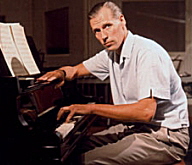 ebruary 20th, 1963 was the session date that George Martin had chosen to record his piano overdubbing onto the song “Misery,” thereby putting the finishing touches on the song. Because only twin-track (or 2-track) machines were used for Beatles recordings at this early stage, minimal overdubs were attempted because of the need to "bounce" additional mixes to create more recording space, each bounce reducing the quality of the original recording. "I found with The Beatles," George Martin explains in the book "Maximum Volume: The Life Of Beatles Producer George Martin," "that if I recorded all of the rhythm on one track and all of the voices on the other, I needn't worry about losing the voices even if I recorded them at the same time. I could concentrate on getting a really loud rhythm sound, knowing that I could always bring it up or down afterwards to make sure the voices were coming through." This being the case, after George Martin completed his piano overdub for "Misery" simultaneous to the original two-track tape being re-recorded onto another two-track machine, the clarity of The Beatles' original performance was still quite good. ebruary 20th, 1963 was the session date that George Martin had chosen to record his piano overdubbing onto the song “Misery,” thereby putting the finishing touches on the song. Because only twin-track (or 2-track) machines were used for Beatles recordings at this early stage, minimal overdubs were attempted because of the need to "bounce" additional mixes to create more recording space, each bounce reducing the quality of the original recording. "I found with The Beatles," George Martin explains in the book "Maximum Volume: The Life Of Beatles Producer George Martin," "that if I recorded all of the rhythm on one track and all of the voices on the other, I needn't worry about losing the voices even if I recorded them at the same time. I could concentrate on getting a really loud rhythm sound, knowing that I could always bring it up or down afterwards to make sure the voices were coming through." This being the case, after George Martin completed his piano overdub for "Misery" simultaneous to the original two-track tape being re-recorded onto another two-track machine, the clarity of The Beatles' original performance was still quite good.
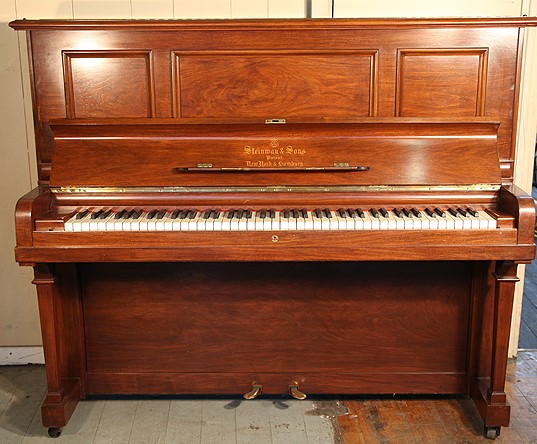 The Beatles were not present on this day because of being in the middle of their Helen Shapiro tour, but from 10:30 am to noon in EMI Studio One, this piano overdub was completed. George Martin experimented with adding piano overdubs onto "take nine" but, upon listening to The Beatles performance, decided that the first half of the song was flawed in various ways, such as a speeded up tempo at the end of the first verse and a flubbed bass note from Paul at the beginning of the song. The Beatles were not present on this day because of being in the middle of their Helen Shapiro tour, but from 10:30 am to noon in EMI Studio One, this piano overdub was completed. George Martin experimented with adding piano overdubs onto "take nine" but, upon listening to The Beatles performance, decided that the first half of the song was flawed in various ways, such as a speeded up tempo at the end of the first verse and a flubbed bass note from Paul at the beginning of the song.
 George Martin decided to make an edit of two different takes in order to get the finished master of The Beatles' performance: this being the first half of "take seven" and the second half of "take nine." After listeneing to the original recordings of both takes, it appears that the edit happens just as the third verse appears (with the word "shend") while George's guitar run in the first bridge of "take seven" must have been edited out as well. With this now completed, George Martin went back to work in performing his piano overdubs onto what was now "take 11," playing the exact riff that George was playing on the guitar, only in octaves and, of course, with perfect timing. He also played a piano arpeggio on top of George’s introductory guitar chord and added two accent notes in between the lyrics in the final two measures of each bridge. It took five takes for him to complete these overdubs to his satisfaction (takes 12 through 16). This becomes the very first of quite a few recordings in their career on which George Martin accompanies The Beatles musically. George Martin decided to make an edit of two different takes in order to get the finished master of The Beatles' performance: this being the first half of "take seven" and the second half of "take nine." After listeneing to the original recordings of both takes, it appears that the edit happens just as the third verse appears (with the word "shend") while George's guitar run in the first bridge of "take seven" must have been edited out as well. With this now completed, George Martin went back to work in performing his piano overdubs onto what was now "take 11," playing the exact riff that George was playing on the guitar, only in octaves and, of course, with perfect timing. He also played a piano arpeggio on top of George’s introductory guitar chord and added two accent notes in between the lyrics in the final two measures of each bridge. It took five takes for him to complete these overdubs to his satisfaction (takes 12 through 16). This becomes the very first of quite a few recordings in their career on which George Martin accompanies The Beatles musically.
 Engineer Geoff Emerick, who was present on this day for his first of a history of sessions he would engineer for the group, details his witnessing of George Martin's overdubs on The Beatles' track "Misery." "That session was my very first exposure to George Martin's signature 'wound-up' piano, piano recorded at half-speed in unison with guitar but played an octave lower. The combination produced a kind of magical sound, and it was an insight into a new way of recording, the creation of brand new tones by combining instruments and by playing them with the tape sped up or slowed down. George Martin had developed that sound years before I met him and he used it on a lot of his records. Overdubbing a half-speed piano is not the easiest thing to do either, because when you're monitoring at half speed, it's hard to keep the rhythm steady. There certainly were more than a few expletives coming from George as he struggled to get the timing down while overdubbing onto the song 'Misery,' on both the spread chord that opens the song and on the little arpeggios and chord stabs that are performed throughout." Engineer Geoff Emerick, who was present on this day for his first of a history of sessions he would engineer for the group, details his witnessing of George Martin's overdubs on The Beatles' track "Misery." "That session was my very first exposure to George Martin's signature 'wound-up' piano, piano recorded at half-speed in unison with guitar but played an octave lower. The combination produced a kind of magical sound, and it was an insight into a new way of recording, the creation of brand new tones by combining instruments and by playing them with the tape sped up or slowed down. George Martin had developed that sound years before I met him and he used it on a lot of his records. Overdubbing a half-speed piano is not the easiest thing to do either, because when you're monitoring at half speed, it's hard to keep the rhythm steady. There certainly were more than a few expletives coming from George as he struggled to get the timing down while overdubbing onto the song 'Misery,' on both the spread chord that opens the song and on the little arpeggios and chord stabs that are performed throughout."
 All of the original mixes of “Misery” were done on February 25th, 1963 in the control room of EMI Studio One by George Martin along with engineers Norman Smith and A.B. Lincoln. Two mono mixes were made on this day, the first having a chopped off introductory chord (which appears on the original UK “Please Please Me” LP). The second mono mix, with the full introductory chord, was sent to Vee-Jay Records in America for their landmark “Introducing The Beatles” album. For some reason, two stereo mixes were also made on this day, possibly to supply a version with slightly more reverb for the American market. All of these mixes, though, did have a slight touch of reverb added. All of the original mixes of “Misery” were done on February 25th, 1963 in the control room of EMI Studio One by George Martin along with engineers Norman Smith and A.B. Lincoln. Two mono mixes were made on this day, the first having a chopped off introductory chord (which appears on the original UK “Please Please Me” LP). The second mono mix, with the full introductory chord, was sent to Vee-Jay Records in America for their landmark “Introducing The Beatles” album. For some reason, two stereo mixes were also made on this day, possibly to supply a version with slightly more reverb for the American market. All of these mixes, though, did have a slight touch of reverb added.
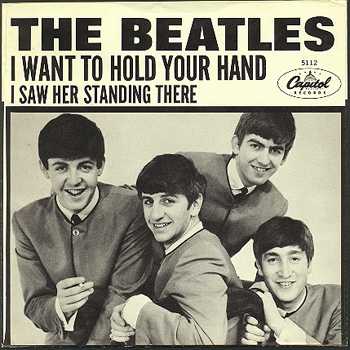 An amusing note to add concerning the recording of “Misery” is The Beatles' most noteworthy example of pronouncing the consonant “s” as “sh.” It can be slightly detected in other Beatle songs of 1963, such as “I Want To Hold Your Hand” "when I shay that shomething"), but it definitely can be witnessed in “Misery” (“shend her back to me”). Add to this their comedic “la,la,la,la,la,la” during the fade-out, and it is apparent that the song was viewed by the band as album filler, being recently rejected by Helen Shapiro. But, for our benefit, this adds a comedic touch which adds to its charm and gives us a hint of the fun-loving Beatles we were soon to get to know in their movie "A Hard Day’s Night." An amusing note to add concerning the recording of “Misery” is The Beatles' most noteworthy example of pronouncing the consonant “s” as “sh.” It can be slightly detected in other Beatle songs of 1963, such as “I Want To Hold Your Hand” "when I shay that shomething"), but it definitely can be witnessed in “Misery” (“shend her back to me”). Add to this their comedic “la,la,la,la,la,la” during the fade-out, and it is apparent that the song was viewed by the band as album filler, being recently rejected by Helen Shapiro. But, for our benefit, this adds a comedic touch which adds to its charm and gives us a hint of the fun-loving Beatles we were soon to get to know in their movie "A Hard Day’s Night."
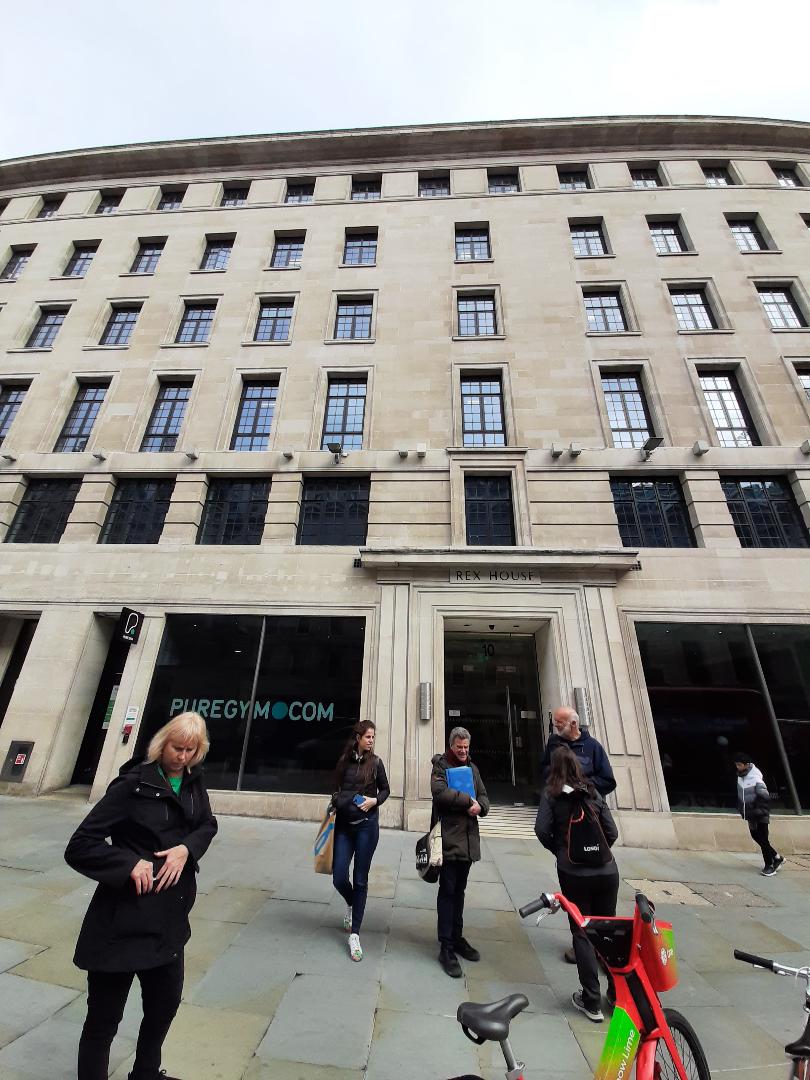 There were seven other occurances that The Beatles recorded the song "Misery" in 1963, these being done specifically for BBC radio. The first was on March 6th at Playhouse Theatre in Manchester between 8 and 8:45 pm, produced by Peter Pilbeam. This recording was broadcast on the radio show "Here We Go" on March 12th between 5 and 5:29 pm. The second BBC recording of the song was broadcast live on the show "Saturday Club" from Studio 3A, Broadcasting House in London on March 16th of that year between 10 am and noon, this being produced by Jimmy Grant and Bernie Andrews. Then on March 21st, The Beatles recorded "Misery" in Studio One of BBC Piccadilly Studios in London between 1 and 2 pm for the show "On The Scene," this airing on March 28th between 5 and 5:29 pm. There were seven other occurances that The Beatles recorded the song "Misery" in 1963, these being done specifically for BBC radio. The first was on March 6th at Playhouse Theatre in Manchester between 8 and 8:45 pm, produced by Peter Pilbeam. This recording was broadcast on the radio show "Here We Go" on March 12th between 5 and 5:29 pm. The second BBC recording of the song was broadcast live on the show "Saturday Club" from Studio 3A, Broadcasting House in London on March 16th of that year between 10 am and noon, this being produced by Jimmy Grant and Bernie Andrews. Then on March 21st, The Beatles recorded "Misery" in Studio One of BBC Piccadilly Studios in London between 1 and 2 pm for the show "On The Scene," this airing on March 28th between 5 and 5:29 pm.
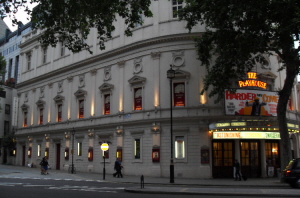 Then back over to Studio One of BBC Piccadilly Studios on April 1st, 1963 to record the song for the program "Side By Side" between 2:30 and 5:30 pm, this show aired three weeks later on April 22nd between 5 and 5:29 pm. "Misery" was also recorded for BBC radio on April 3rd before an audience at London's new Playhouse Theater that year between 8:30 to 9:45 pm, this being broadcast on the show "Easy Beat" on April 7th between 10:31 and 11:30 am. An additional private recording of the song was made on April 4th, 1963 by John Bloomfield, a fifteen-year-old student in the audience of Stowe School at Roxburgh Hall in Stowe where The Beatles performed a total of 22 songs between 6:30 to 7:30 pm. Then we skip to May 24th when The Beatles recorded the song for the first program of their very own BBC radio show entitled "Pop Go The Beatles" in Studio Two of Aeolian Hall in London between 2 and 6 pm, which was produced by Terry Henebery. This show was broadcast on June 4th between 5 and 5:29 pm. Finally, they recorded the song on September 3rd in Studio Two of Aeolian Hall in London between 5 and 7:30 pm for the 14th edition of "Pop Go The Beatles," this time produced by Ian Grant. This was broadcast by the BBC on September 17, 1963 between 5 and 5:29 pm. Then back over to Studio One of BBC Piccadilly Studios on April 1st, 1963 to record the song for the program "Side By Side" between 2:30 and 5:30 pm, this show aired three weeks later on April 22nd between 5 and 5:29 pm. "Misery" was also recorded for BBC radio on April 3rd before an audience at London's new Playhouse Theater that year between 8:30 to 9:45 pm, this being broadcast on the show "Easy Beat" on April 7th between 10:31 and 11:30 am. An additional private recording of the song was made on April 4th, 1963 by John Bloomfield, a fifteen-year-old student in the audience of Stowe School at Roxburgh Hall in Stowe where The Beatles performed a total of 22 songs between 6:30 to 7:30 pm. Then we skip to May 24th when The Beatles recorded the song for the first program of their very own BBC radio show entitled "Pop Go The Beatles" in Studio Two of Aeolian Hall in London between 2 and 6 pm, which was produced by Terry Henebery. This show was broadcast on June 4th between 5 and 5:29 pm. Finally, they recorded the song on September 3rd in Studio Two of Aeolian Hall in London between 5 and 7:30 pm for the 14th edition of "Pop Go The Beatles," this time produced by Ian Grant. This was broadcast by the BBC on September 17, 1963 between 5 and 5:29 pm.
Song Structure and Style
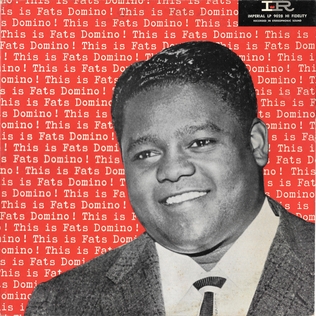 The song was written in one of the most established formulas of popular music of its time. It was written using the 'verse/ verse/ bridge/ verse' style (or aaba), this format not featuring a repeatable chorus. The songwriting styles of many of The Beatles' favorite artists of the time use a similar song structure, such as Fats Domino and Arthur Alexander. The title, or hook-line, of the song is found at the end of each verse, which helps listeners to remember the title of the song. In the case of "Misery," The Beatles opted not to include a solo of any kind, which, after the last verse, allows for an immediate repeating of the bridge and final verse. After the guitar strum/piano arpeggio, Lennon and McCartney sing a partially a cappella introduction of the key phrase of the song. The true tempo of the song then appears as both John and Paul sing all of the song's lyrics together, mostly in unison. Only when the words “in misery” are sung does McCartney sing a higher harmony. The song was written in one of the most established formulas of popular music of its time. It was written using the 'verse/ verse/ bridge/ verse' style (or aaba), this format not featuring a repeatable chorus. The songwriting styles of many of The Beatles' favorite artists of the time use a similar song structure, such as Fats Domino and Arthur Alexander. The title, or hook-line, of the song is found at the end of each verse, which helps listeners to remember the title of the song. In the case of "Misery," The Beatles opted not to include a solo of any kind, which, after the last verse, allows for an immediate repeating of the bridge and final verse. After the guitar strum/piano arpeggio, Lennon and McCartney sing a partially a cappella introduction of the key phrase of the song. The true tempo of the song then appears as both John and Paul sing all of the song's lyrics together, mostly in unison. Only when the words “in misery” are sung does McCartney sing a higher harmony.
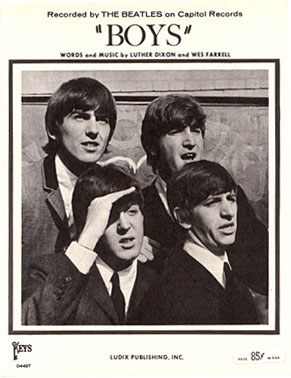 Ringo performs metronome-style drums for this song, sticking strictly to the hi-hat with the right hand for the entire song. Except for the small drum intro at the beginning of Ringo's appearance on the song, no drum fills are displayed at all right through until the song fades. This is a strong indication, not of Ringo's lack of skill, but of his performing what is suitable to the particular song being recorded. In actuality, "take six" of "Misery" reveals that Ringo originally planned on performing energetic drum fills during the bridge, but this was vetoed in favor of the simplistic drum work we hear on the song. It was easily discernable at the time that a Keith Moon-like drumming style was not required here, but he surely did cut loose on other tracks recorded that day, such as on “Boys” and “I Saw Her Standing There,” which shows the versatility Ringo had. He definitely wasn’t a “showboat,” but a group player. Ringo performs metronome-style drums for this song, sticking strictly to the hi-hat with the right hand for the entire song. Except for the small drum intro at the beginning of Ringo's appearance on the song, no drum fills are displayed at all right through until the song fades. This is a strong indication, not of Ringo's lack of skill, but of his performing what is suitable to the particular song being recorded. In actuality, "take six" of "Misery" reveals that Ringo originally planned on performing energetic drum fills during the bridge, but this was vetoed in favor of the simplistic drum work we hear on the song. It was easily discernable at the time that a Keith Moon-like drumming style was not required here, but he surely did cut loose on other tracks recorded that day, such as on “Boys” and “I Saw Her Standing There,” which shows the versatility Ringo had. He definitely wasn’t a “showboat,” but a group player.
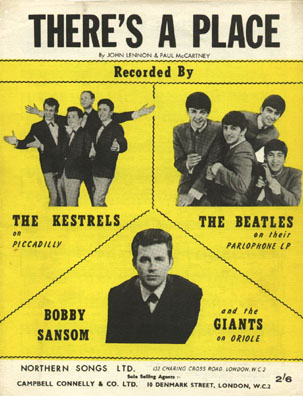 The rhythm guitar style appearing on this song was one that was used quite regularly in the early Beatles recording career, such as on “From Me To You,” “There’s A Place” and “She Loves You.” Both John and George were confined to rhythm guitar in the song, which is primarily shifting our focus on the vocals and lyrics. "Take six" of the song also shows the guitar phrases that Harrison intended for the bridge, which were left off in the end in favor of the similar sounding piano phrases George Martin later overdubbed. The rhythm guitar style appearing on this song was one that was used quite regularly in the early Beatles recording career, such as on “From Me To You,” “There’s A Place” and “She Loves You.” Both John and George were confined to rhythm guitar in the song, which is primarily shifting our focus on the vocals and lyrics. "Take six" of the song also shows the guitar phrases that Harrison intended for the bridge, which were left off in the end in favor of the similar sounding piano phrases George Martin later overdubbed.
 A minor surprise we hear in “Misery” is the changed lyrics that appear in the second bridge. “Can’t she see she’ll always be the only one, only one” is later replaced with “She’ll remember and she’ll miss her only one, lonely one.” Usually in Beatles songs, as well within the established song structure of the day, the bridge is identical when repeated. A minor surprise we hear in “Misery” is the changed lyrics that appear in the second bridge. “Can’t she see she’ll always be the only one, only one” is later replaced with “She’ll remember and she’ll miss her only one, lonely one.” Usually in Beatles songs, as well within the established song structure of the day, the bridge is identical when repeated.
It is also interesting to note that the lyrics, although quite negative, are accompanied by a very cheerful melody line and chord structure. Even within the lyrics it is noticeable that the heartbreak sung about isn’t taken quite that seriously. After we hear about the singer losing his girl “for sure” and not being able to see her anymore, we next hear “it’s gonna be a drag”! It makes the listener feel he’s not taking this breakup so hard after all.
 Vee-Jay's "Introducing...The Beatles" album
|
American Releases
The first time the US heard the song was on the Vee-Jay album “Introducing…The Beatles,” released January 10th, 1964. The album was prepared for release as early as July 22nd, 1963, but was not released until January, making it the first Beatles album released in America. This album reached #2 on the Billboard album chart, just below "Meet The Beatles!" at #1.
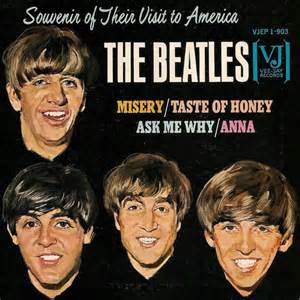 In order to cash in on the Beatles' first US visit with their three Ed Sullivan Show appearances, Vee-Jay issued a four song extended play single (or EP) they titled “The Beatles – Souvenir of Their Visit To America.” This was released on March 23rd, 1964 and contained “Misery” as the first song on side one. As EPs don’t sell as well in America as they do in Britain, this release did not chart at all in the Billboard Hot 100, due in part to a percentage of the sales being made through mail order offers. Nonetheless, it was reported to have sold 78,800 copies. Capitol records also attempted releasing Beatles EPs on two occasions in the coming months, but these fared only slightly better than this one did. In order to cash in on the Beatles' first US visit with their three Ed Sullivan Show appearances, Vee-Jay issued a four song extended play single (or EP) they titled “The Beatles – Souvenir of Their Visit To America.” This was released on March 23rd, 1964 and contained “Misery” as the first song on side one. As EPs don’t sell as well in America as they do in Britain, this release did not chart at all in the Billboard Hot 100, due in part to a percentage of the sales being made through mail order offers. Nonetheless, it was reported to have sold 78,800 copies. Capitol records also attempted releasing Beatles EPs on two occasions in the coming months, but these fared only slightly better than this one did.
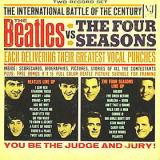 Shortly before Vee-Jay records were court ordered to cease and desist producing and/or distributing any Beatles-related product due to contract violations, they released the “Introducing...The Beatles” album in two more forms, both containing “Misery.” The due date given Vee-Jay to stop production of Beatles music was October 15th, 1964, so on October 1st, 1964, Vee-Jay released a double compilation album titled "The Beatles vs The Four Seasons," coupling the "Introducing...The Beatles" album with “The Golden Hits of the Four Seasons.” A score card was even supplied with the album for music fans to decide which group they loved the most. This higher priced double-album only peaked at #142 on the Billboard album charts. Shortly before Vee-Jay records were court ordered to cease and desist producing and/or distributing any Beatles-related product due to contract violations, they released the “Introducing...The Beatles” album in two more forms, both containing “Misery.” The due date given Vee-Jay to stop production of Beatles music was October 15th, 1964, so on October 1st, 1964, Vee-Jay released a double compilation album titled "The Beatles vs The Four Seasons," coupling the "Introducing...The Beatles" album with “The Golden Hits of the Four Seasons.” A score card was even supplied with the album for music fans to decide which group they loved the most. This higher priced double-album only peaked at #142 on the Billboard album charts.
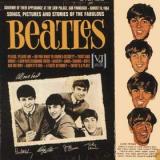 Then, just three days before the court order took effect, Vee-Jay records released the album “Songs, Pictures And Stories Of The Fabulous Beatles” on October 12th, 1964. This was a blatant attempt at gouging American fans out of more money by encouraging them to purchase the same set of songs they already owned. With its attractive full color gate-fold sleeve, it was designed to look like a new album by America’s favorite group. But the album inside that sleeve had not only the same exact song list as the “Introducing…The Beatles” album, but the actual album they had purchased previously with the same label on the record. This release proved to fool at least some of the US Beatles fans, in that it reached #63 on Billboard's album charts and sold approximately 400,000 copies. Vee-Jay records apparently felt that ‘desperate times called for desperate measures,’ since the record label was facing major financial troubles at the time, this eventually resulting in their closing their doors in May of 1966. Then, just three days before the court order took effect, Vee-Jay records released the album “Songs, Pictures And Stories Of The Fabulous Beatles” on October 12th, 1964. This was a blatant attempt at gouging American fans out of more money by encouraging them to purchase the same set of songs they already owned. With its attractive full color gate-fold sleeve, it was designed to look like a new album by America’s favorite group. But the album inside that sleeve had not only the same exact song list as the “Introducing…The Beatles” album, but the actual album they had purchased previously with the same label on the record. This release proved to fool at least some of the US Beatles fans, in that it reached #63 on Billboard's album charts and sold approximately 400,000 copies. Vee-Jay records apparently felt that ‘desperate times called for desperate measures,’ since the record label was facing major financial troubles at the time, this eventually resulting in their closing their doors in May of 1966.
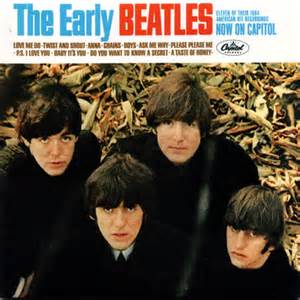 As of mid October 1964, Capitol records now had all rights to the early Beatles catalog. Therefore, they turned their attention to this catalog on March 22nd, 1965 with the release of the album “The Early Beatles” which contained most of the songs previously licensed to Vee-Jay records. Unfortunately for US Beatles fans, that record did not contain the song “Misery,” nor did any of the makeshift Beatles albums that Capitol released in the next 15 years. As of mid October 1964, Capitol records now had all rights to the early Beatles catalog. Therefore, they turned their attention to this catalog on March 22nd, 1965 with the release of the album “The Early Beatles” which contained most of the songs previously licensed to Vee-Jay records. Unfortunately for US Beatles fans, that record did not contain the song “Misery,” nor did any of the makeshift Beatles albums that Capitol released in the next 15 years.
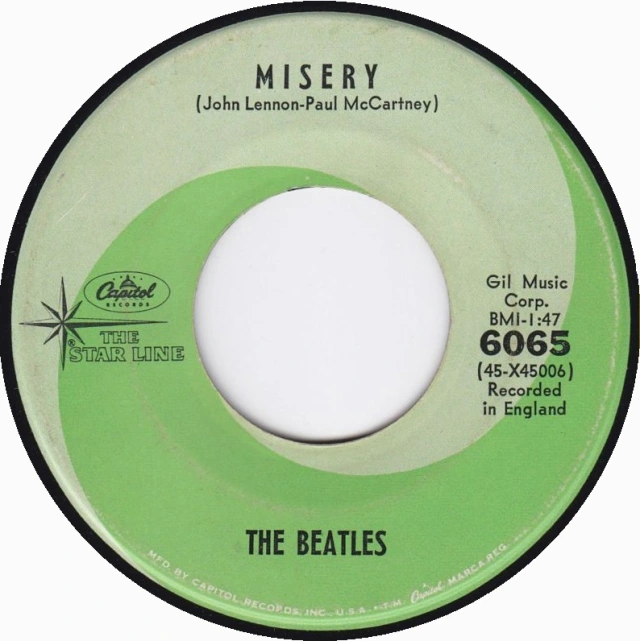 But another of Capitol Records' ideas came to fruition on October 11th, 1965, with the release of six Beatles singles on the short-lived “Star Line” budget series. Four of these singles were the Vee-Jay singles released in 1964 ("Please Please Me", "Twist And Shout", "Love Me Do" and "Do You Want To Know A Secret"). The other two singles were new concoctions from Capitol, these being “Boys” backed with “Kansas City” and then "Roll Over Beethoven" backed with "Misery." Although this made "Misery" available again for American Beatles fans, it mostly went unnoticed as none of these singles made much of a dent on the Billboard Hot 100 (“Boys” did briefly chart, peaking at #102), which was then dominated by their current #1 hit “Yesterday.” Although reissues of the “Misery” single did surface, the song was not available on any US album since the Vee-Jay releases in October of 1964 and certainly was not available in stereo. But another of Capitol Records' ideas came to fruition on October 11th, 1965, with the release of six Beatles singles on the short-lived “Star Line” budget series. Four of these singles were the Vee-Jay singles released in 1964 ("Please Please Me", "Twist And Shout", "Love Me Do" and "Do You Want To Know A Secret"). The other two singles were new concoctions from Capitol, these being “Boys” backed with “Kansas City” and then "Roll Over Beethoven" backed with "Misery." Although this made "Misery" available again for American Beatles fans, it mostly went unnoticed as none of these singles made much of a dent on the Billboard Hot 100 (“Boys” did briefly chart, peaking at #102), which was then dominated by their current #1 hit “Yesterday.” Although reissues of the “Misery” single did surface, the song was not available on any US album since the Vee-Jay releases in October of 1964 and certainly was not available in stereo.
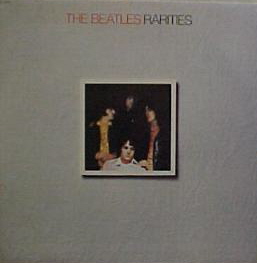 That takes us to March 24th, 1980 when Capitol released the US version of the album “Rarities,” which finally rectified this matter. This album contains the first “true stereo” version of “Misery” in the US since the “Introducing…The Beatles” LP went out of print in October of 1964. US “Beatlemaniacs” were thrilled to finally have this gem available in the form they always wanted to hear it, which made this “filler” song from early 1963 sound like a long-lost masterpiece. That takes us to March 24th, 1980 when Capitol released the US version of the album “Rarities,” which finally rectified this matter. This album contains the first “true stereo” version of “Misery” in the US since the “Introducing…The Beatles” LP went out of print in October of 1964. US “Beatlemaniacs” were thrilled to finally have this gem available in the form they always wanted to hear it, which made this “filler” song from early 1963 sound like a long-lost masterpiece.
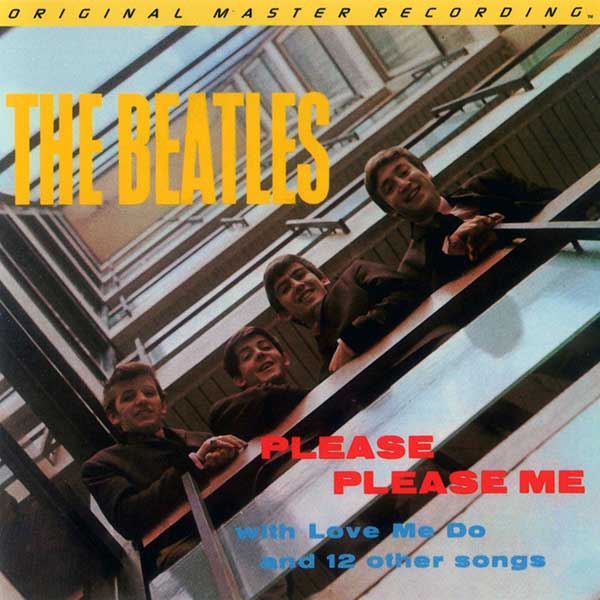 The first time the original British "Please Please Me" album was made available in the US was the "Original Master Recording" vinyl edition released through Mobile Fidelity Sound Lab in January of 1987. This LP included "Misery" and was prepared utilizing half-speed mastering technology from the original master tape on loan from EMI. This version of the album was only available for a short time and has become quite difficult to find today. The first time the original British "Please Please Me" album was made available in the US was the "Original Master Recording" vinyl edition released through Mobile Fidelity Sound Lab in January of 1987. This LP included "Misery" and was prepared utilizing half-speed mastering technology from the original master tape on loan from EMI. This version of the album was only available for a short time and has become quite difficult to find today.
On February 26th, 1987, the original British "Please Please Me " album was released on compact disc, the vinyl version being issued in the US on July 21st, 1987. While this album was only released in mono at the time, a remastered stereo version on CD came out on September 9th, 2009 and on vinyl on November 13th, 2012, these using the stereo mix George Martin made on February 25th, 1963. Thereafter, a true stereo version of "Misery" was now forever available in the US. " album was released on compact disc, the vinyl version being issued in the US on July 21st, 1987. While this album was only released in mono at the time, a remastered stereo version on CD came out on September 9th, 2009 and on vinyl on November 13th, 2012, these using the stereo mix George Martin made on February 25th, 1963. Thereafter, a true stereo version of "Misery" was now forever available in the US.
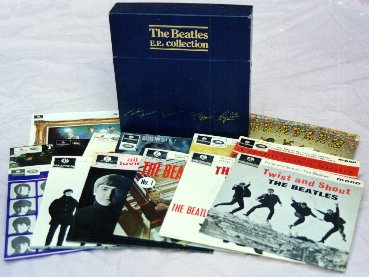 On June 30th, 1992, a new box set “Compact Disc EP Collection” came out containing “Misery” due to the song's inclusion on the original 1963 British EP “Beatles No. 1.” On June 30th, 1992, a new box set “Compact Disc EP Collection” came out containing “Misery” due to the song's inclusion on the original 1963 British EP “Beatles No. 1.”
Then on September 9th, 2009, the CD box set “The Beatles In Mono” was released, this set featuring a remastered mono version of the song, which never sounded better. The vinyl edition of this box set was first released on September 9th, 2014.
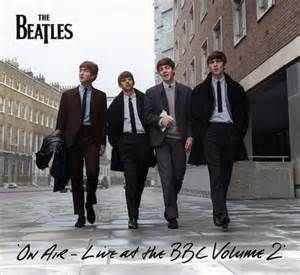 Then, on November 11th, 2013, the album "On Air - Live At The BBC Volume 2" was released. An interesting live rendition of "Misery" was contained therein, the song being recorded on March 6th, 1963 for the BBC radio show "Here We Go." George Martin's piano runs are here replaced by George Harrison's now-competent guitar fills, which he had time to perfect at this point. Notice, however, John nearly forgetting his "oh, oh, oh, oh" vocal near the end of the song. Then, on November 11th, 2013, the album "On Air - Live At The BBC Volume 2" was released. An interesting live rendition of "Misery" was contained therein, the song being recorded on March 6th, 1963 for the BBC radio show "Here We Go." George Martin's piano runs are here replaced by George Harrison's now-competent guitar fills, which he had time to perfect at this point. Notice, however, John nearly forgetting his "oh, oh, oh, oh" vocal near the end of the song.
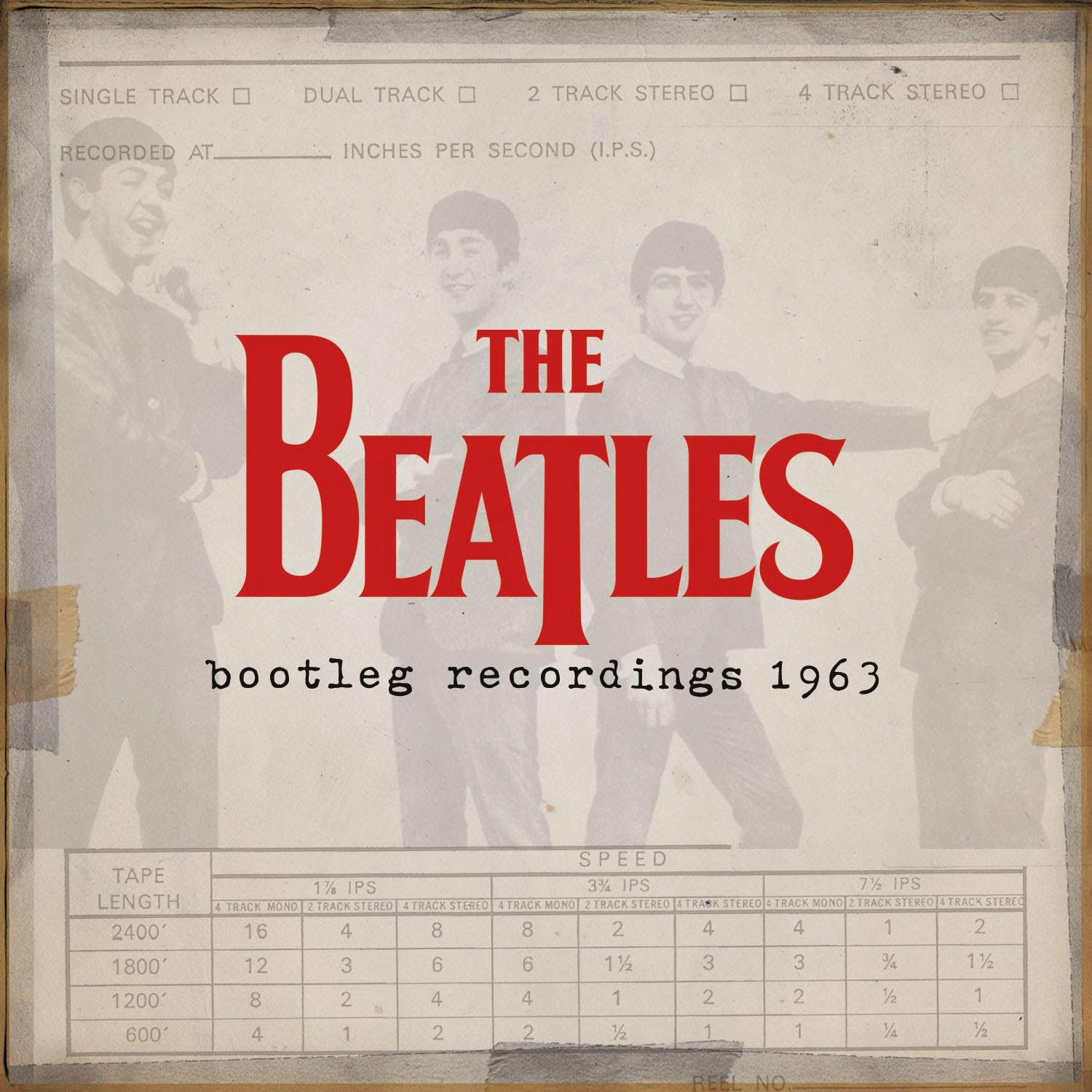 On December 17th, 2013, iTunes released a 59 track compilation album they called "Bootleg Recordings 1963" that was only available on their downloading platform, "take one" and "take seven" of "Misery" from the band's February 11th, 1963 EMI recording session included therein. The purpose of this release was for extending the copyright of these recordings under European Union law from 50 years (which would have expired at the end of 2013) to 70 years (until 2033), this compilation album being considered an official release. This album was only available in the US on that date to those in the know for a number of hours for $39.99 in its entirety or to be purchased as individual tracks, but was later made available for purchase as well. On December 17th, 2013, iTunes released a 59 track compilation album they called "Bootleg Recordings 1963" that was only available on their downloading platform, "take one" and "take seven" of "Misery" from the band's February 11th, 1963 EMI recording session included therein. The purpose of this release was for extending the copyright of these recordings under European Union law from 50 years (which would have expired at the end of 2013) to 70 years (until 2033), this compilation album being considered an official release. This album was only available in the US on that date to those in the know for a number of hours for $39.99 in its entirety or to be purchased as individual tracks, but was later made available for purchase as well.
Live Performances
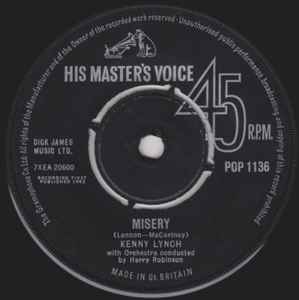 Even though both Lennon and McCartney testified in interviews that this composition was just "hacked out for someone," “Misery” did end up being in the Beatles' set list periodically for a few months after the group recorded it. Kenny Lynch had indeed taken the song on as a released single and in concert appearances, but this didn’t stop The Beatles from playing it themselves on stage. After all, it was featured very prominently as the second track of side one on their current British album “Please Please Me” which was riding high on the UK charts during 1963. Even though both Lennon and McCartney testified in interviews that this composition was just "hacked out for someone," “Misery” did end up being in the Beatles' set list periodically for a few months after the group recorded it. Kenny Lynch had indeed taken the song on as a released single and in concert appearances, but this didn’t stop The Beatles from playing it themselves on stage. After all, it was featured very prominently as the second track of side one on their current British album “Please Please Me” which was riding high on the UK charts during 1963.
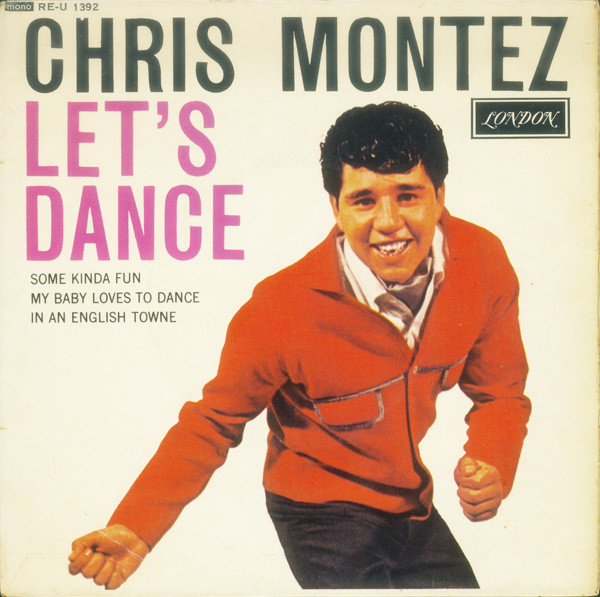 The band included “Misery” in their set list during their Tommy Roe / Chris Montez national theater package tour which stretched from March 9th through the 31st of 1963. They continued playing the song after this tour ended, evidenced by its inclusion on April 4th, 1963, at their hour-long appearance at Roxburgh Hall, Stowe School in Stowe, Bucks, as detailed above. The Beatles omitted the song apparently during the following Roy Orbison tour of May and June of 1963, but they resumed performing it in later shows, June 30th, 1963 at the ABC Cinema in Norfolk being their last known performance of "Misery." Their “Please Please Me” album, which featured the song, was enjoying its third week at #1 on the British charts at the time and they no doubt wanted to capitalize on its success. The band included “Misery” in their set list during their Tommy Roe / Chris Montez national theater package tour which stretched from March 9th through the 31st of 1963. They continued playing the song after this tour ended, evidenced by its inclusion on April 4th, 1963, at their hour-long appearance at Roxburgh Hall, Stowe School in Stowe, Bucks, as detailed above. The Beatles omitted the song apparently during the following Roy Orbison tour of May and June of 1963, but they resumed performing it in later shows, June 30th, 1963 at the ABC Cinema in Norfolk being their last known performance of "Misery." Their “Please Please Me” album, which featured the song, was enjoying its third week at #1 on the British charts at the time and they no doubt wanted to capitalize on its success.
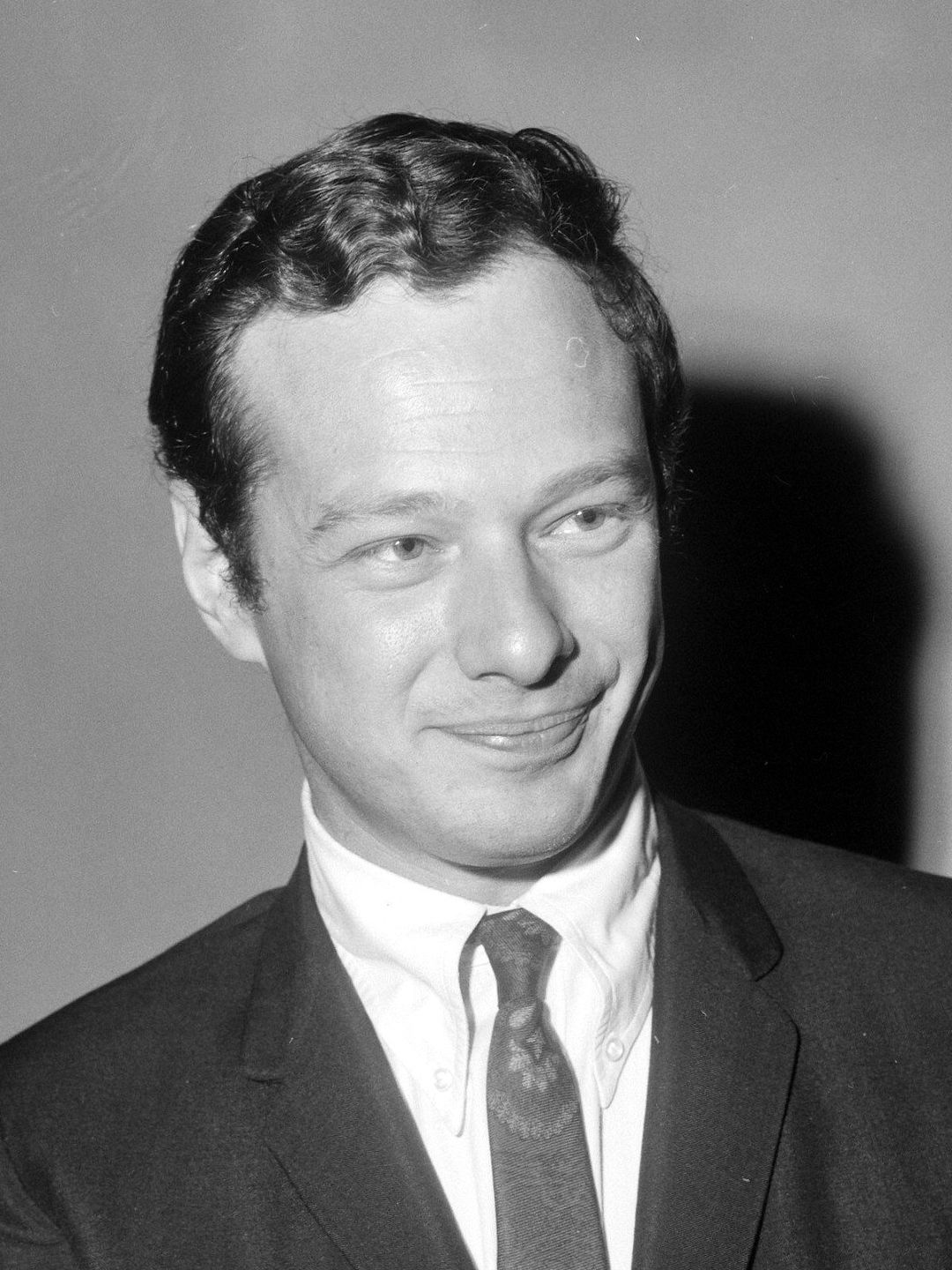 It could be argued that, since the material chosen for their album came from their “stage act,” "Misery" must indeed have been performed before its official EMI recording on February 11th, 1963. However, this song appears to be an exception to that rule since it had just been composed (on January 26th, 1963) and subsequently rejected by Helen Shapiro’s manager within a period of two weeks. Proof of this fact can also be witnessed by listening to the 11 takes of the song, which clearly shows suggestions being made as to how to perform it, such as the bass line. These things would undoubtedly have been worked out beforehand had they performed the song previously. Its inclusion on their first album most likely came about because of the increase in songwriting royalties it would generate for John and Paul, as Brian Epstein was encouraging at the time. It could be argued that, since the material chosen for their album came from their “stage act,” "Misery" must indeed have been performed before its official EMI recording on February 11th, 1963. However, this song appears to be an exception to that rule since it had just been composed (on January 26th, 1963) and subsequently rejected by Helen Shapiro’s manager within a period of two weeks. Proof of this fact can also be witnessed by listening to the 11 takes of the song, which clearly shows suggestions being made as to how to perform it, such as the bass line. These things would undoubtedly have been worked out beforehand had they performed the song previously. Its inclusion on their first album most likely came about because of the increase in songwriting royalties it would generate for John and Paul, as Brian Epstein was encouraging at the time.
Conclusion
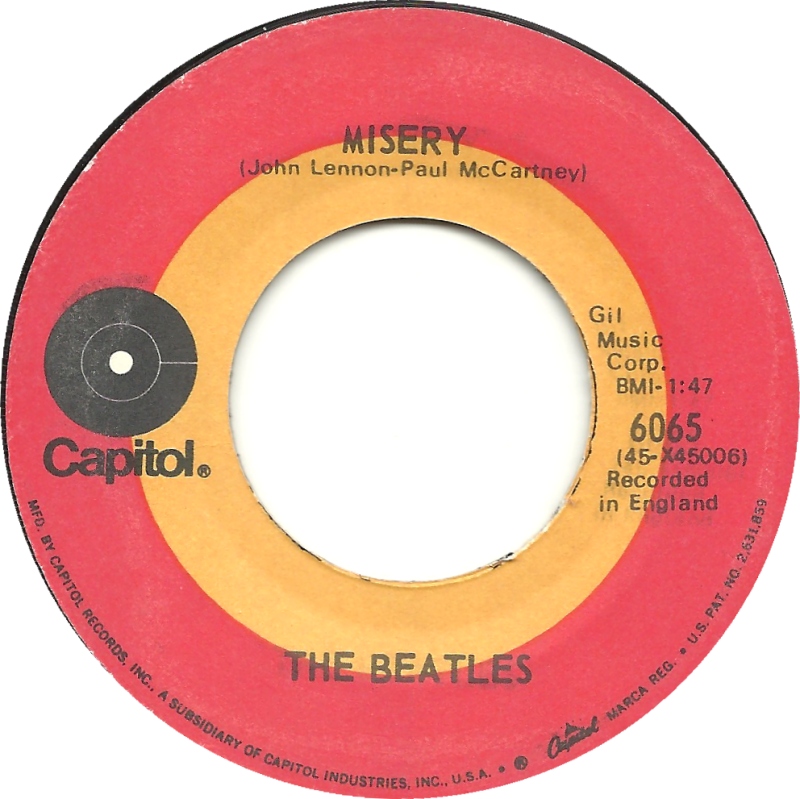 It stands to reason that, although this song isn’t the most noteworthy Beatles song by any stretch of the imagination, the Lennon / McCartney catalog would be amiss without including this classic piece of early songwriting from this famous duo. The fun-loving nature of its performance, coupled with the tongue-in-cheek “downbeat” lyrics, displays an atmosphere of warmth and charm that gives us an early glimpse of their wit. And, dare I say, with the exception of J. Frank Wilson's smash hit "Last Kiss," this composition is arguably the happiest "sad song" ever written! It stands to reason that, although this song isn’t the most noteworthy Beatles song by any stretch of the imagination, the Lennon / McCartney catalog would be amiss without including this classic piece of early songwriting from this famous duo. The fun-loving nature of its performance, coupled with the tongue-in-cheek “downbeat” lyrics, displays an atmosphere of warmth and charm that gives us an early glimpse of their wit. And, dare I say, with the exception of J. Frank Wilson's smash hit "Last Kiss," this composition is arguably the happiest "sad song" ever written!
Song Summary
“Misery”
Written by: Paul McCartney / John Lennon
-
Song Written: January 26 - 31, 1963
-
Song Recorded: February 11 and 20, 1963
-
First US Release Date: January 6, 1964
-
-
-
Highest Chart Position: n/a
-
-
Length: 1:46
-
Key: C major
-
Producer: George Martin
-
Engineers: Norman Smith, Richard Langham, Stuart Eltham, Geoff Emerick
Instrumentation (most likely):
- John Lennon – Lead Vocals, Rhythm Guitar (1958 Rickenbacher 325)
- Paul McCartney - Lead and Harmony Vocals, Bass Guitar (1961 Hofner 500/1)
- George Harrison – Rhythm Guitar (1957 Gretsch Duo Jet)
- Ringo Starr – Drums (1960 Premier 58/54 Mahogany)
- George Martin - Piano (1905 Steinway Vertegrand upright)
Written and compiled by Dave Rybaczewski
|
IF YOU WOULD LIKE TO MAKE A DONATION TO KEEP THIS WEBSITE UP AND RUNNING, PLEASE CLICK BELOW!
Sign Up Below for our MONTHLY BEATLES TRIVIA QUIZ!
|